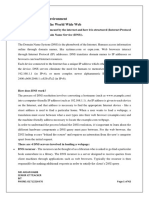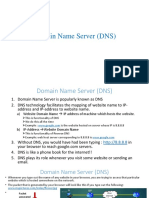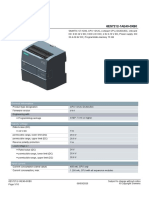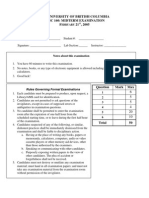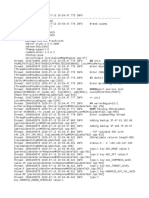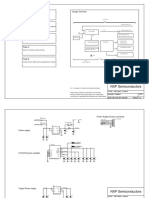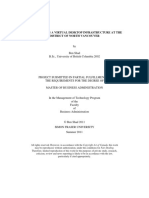0% found this document useful (0 votes)
8 views5 pagesAssignment No.04 Computer Network
The Domain Name System (DNS) acts as the Internet's phonebook, translating human-readable domain names into machine-readable IP addresses. The document outlines the step-by-step process of how DNS works, from user requests to website loading, detailing the roles of local caches, DNS resolvers, and authoritative servers. This process occurs rapidly, allowing users to access websites seamlessly.
Uploaded by
nawal najamCopyright
© © All Rights Reserved
We take content rights seriously. If you suspect this is your content, claim it here.
Available Formats
Download as PDF, TXT or read online on Scribd
0% found this document useful (0 votes)
8 views5 pagesAssignment No.04 Computer Network
The Domain Name System (DNS) acts as the Internet's phonebook, translating human-readable domain names into machine-readable IP addresses. The document outlines the step-by-step process of how DNS works, from user requests to website loading, detailing the roles of local caches, DNS resolvers, and authoritative servers. This process occurs rapidly, allowing users to access websites seamlessly.
Uploaded by
nawal najamCopyright
© © All Rights Reserved
We take content rights seriously. If you suspect this is your content, claim it here.
Available Formats
Download as PDF, TXT or read online on Scribd
/ 5





















